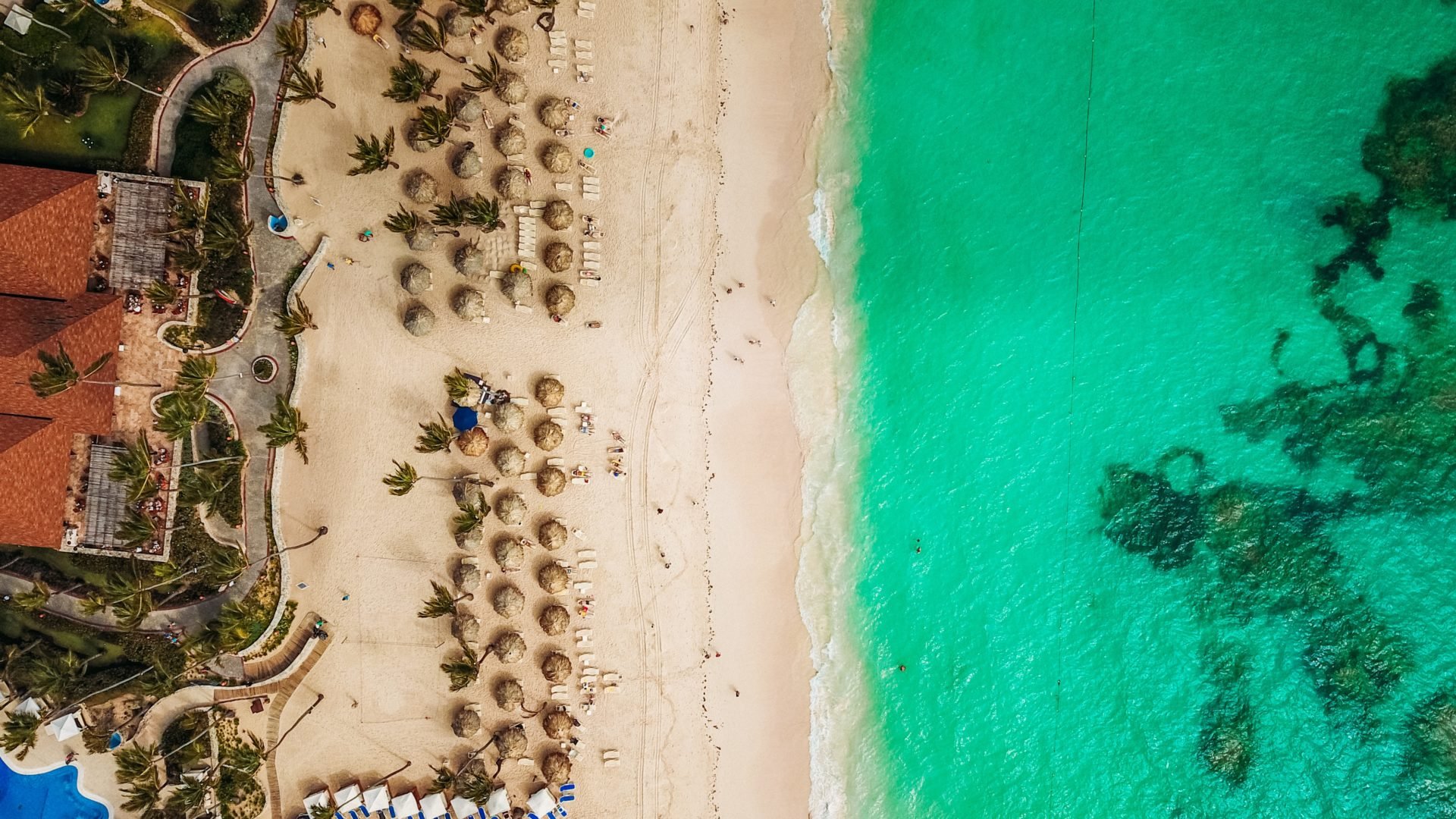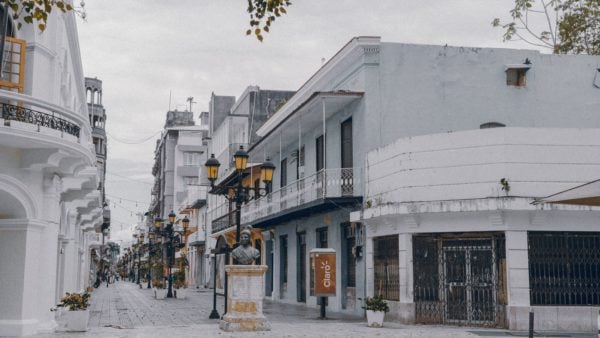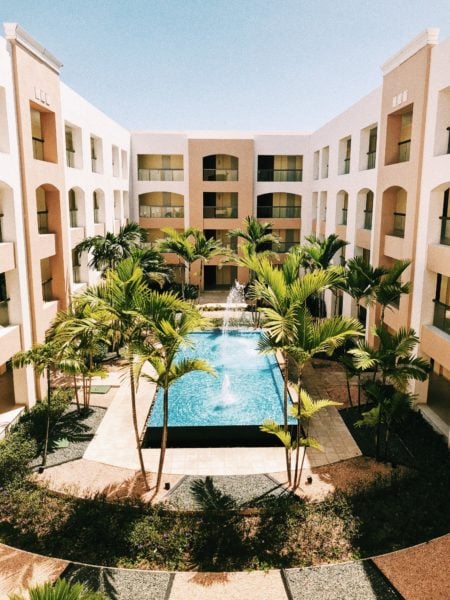Planning a trip to the Dominican Republic? While this stunning destination offers beautiful beaches and rich culture, understanding Dominican Republic travel safety is essential for a worry-free vacation. In this guide, we’ll cover everything you need to know about traveling safely, including general safety tips, the importance of travel insurance, hurricane preparedness, and family-friendly travel advice to help you make the most of your adventure!
Table of Contents
 Can you currently travel to the Dominican Republic?
Can you currently travel to the Dominican Republic?
The Dominican Republic is currently reopened to travelers. The Dominican Republic Ministry of Tourism has released new safety protocols for all travel operators, hotels, and restaurants to ensure the health and safety of local residents and travelers. The Minister of Tourism Francisco Javier García stated “All safety measures conform to the recommendations of the World Health Organization and aim to ensure the safety of all those who participate in tourism, from service providers to visitors. Our guiding principle is to generate a framework and tools to offer unforgettable tourist experiences in accordance with the most rigorous standards in the industry.”
Other new safety protocols include:
 Is it safe to travel to the Dominican Republic?
Is it safe to travel to the Dominican Republic?
Refer to the resources below for current information to safely plan a trip to the Dominican Republic as a tourist.
Ensure you have adequate access to medical care and emergency assistance by purchasing travel insurance. Since most incorporate a 24/7 emergency assistance service, you can rest easy knowing if you need to find a local medical facility or if your passport gets stolen you have a place to go for immediate support. Make sure you are aware of the most common tourist scams before you depart on vacation to better protect yourself!
Here are a few tips for traveling to the Dominican Republic to keep your trip as safe as possible.
Register for STEP: The Smart Traveler Enrollment Program is a free service for US citizens traveling abroad. To the Yonder team, it’s a must for international travel. The program allows you to register and connect your travels to the nearest U.S. Embassy in the Dominican Republic. Once you register your trip, you will receive travel advisory alerts before and during your time there.
Dress Simply: The most popular crime in the country is a drive-by robbery. The robber usually quickly approaches you on a motorcycle or bicycle, grabs your purse or jewelry you may be wearing, and zooms away, all within a couple of seconds. To avoid this, dress simply, wear limited jewelry, and leave the designer purse at home.
Plan Day Activities: Since most crimes occur in the evening, aim to return to your resort or hotel by dusk if you’re going on an excursion or outing. If you plan on staying out a bit later, always use increased caution.
If you’re worried about traveling to the Dominican Republic due to crime and safety, travel insurance can provide some extra peace of mind. Should a travel or medical emergency happen during your travels, travel insurance provides 24/7 emergency assistance to ensure you and your loved ones are taken care of right away.
Policies also have protection for your belongings should they become lost or taken from you during your expedition. Since the price of a policy is determined by several factors, it’s best to compare your options to find a policy that provides the coverage you’re looking for at the most affordable price!
 What is the safest city in the Dominican Republic?
What is the safest city in the Dominican Republic?
While some cities might be safer than others in the Dominican Republic, it’s imperative to follow the safety precautions above wherever you plan to travel. The most popular destinations and the most protected places in the Dominican Republic are Punta Cana, Santo Domingo, and Puerto Plata.
Punta Cana is located in La Altagracia, the Dominican Republic’s easternmost province. Despite the deaths that made media headlines in 2019, it’s the safest city in the Dominican Republic. The main resort area here is patrolled by CESTUR, a police force dedicated to keeping foreigners, resorts, and popular tourist areas safe. You’ll find some of the most secure places to stay in the Dominican Republic here.
Puerto Plata is situated on the northern coast. It’s well-known for its colonial architecture and the unbelievable sea views from the cable car going up to Mount Isabel de Torres. Similar to Punta Plata, since this place is a well-known tourist destination, crime is low. However, thefts are common so leave valuables at home or in the hotel safe when taking a day excursion to the fascinating Jewish-influenced city of Sosua.
The capital Santo Domingo located on the southern coast is the largest city in the Dominican Republic and is most susceptible to petty crime. It’s not uncommon for muggings to happen in the daytime and scams, especially for unmarked taxis or false police officers. Good news is that the U.S. embassy is located in Santo Domingo, so you could always head there if you felt unsafe.
 Is the Dominican Republic susceptible to hurricanes?
Is the Dominican Republic susceptible to hurricanes?
Hurricanes in the North Atlantic usually occur June – November with September being the peak month for storms. Yet, in the past 100 years, less than 15 hurricanes or tropical storms have hit the country of the Dominican Republic.
You should still plan that tropical summer vacation but make sure you’re well-prepared for hurricane season travel. Stay on top of the elements, buy travel insurance as soon as you make a deposit or payment towards your trip, bring an emergency kit, and remain flexible.
 What are some safe and family-friendly activities or excursions in the Dominican Republic?
What are some safe and family-friendly activities or excursions in the Dominican Republic?
As previously mentioned, the Dominican Republic has reopened its borders to tourists. Here are some safe, “socially distant” and family-friendly activities not to miss during your vacation!
Adventure Enthusiasts: Love adding a bit of adrenaline to your vacation? Book a 3-hour white water raft tour down the Yaque del Norte River, the largest river in the Caribbean. Rancho Jarabacoa provides an experience to see the Dominican Republic countryside from the water with a professional guide. Guests must be at least 12 years old.
Learn a New Skill: You’re excited to spend your days relaxing at the beach — rightfully so! Why not combine beach time with learning a new skill like surfing? Macao Surf Camp in Punta Cana offers private or group surf lessons for travelers at all levels.
Lagoon Hop: Explore the area’s Indigenous Eyes Ecological Park and Reserve and its 12 freshwater lagoons, 5 of which are swimmable. The extremely clear, deep turquoise waters are a perfect photo opportunity for that family Christmas card.
 What is the Best Time to Visit the Dominican Republic?
What is the Best Time to Visit the Dominican Republic?
The best time to visit the Dominican Republic is from December to April. The weather is pleasantly warm and dry, perfect for beach activities and exploring the vibrant culture. During this peak season, you’ll enjoy lively festivals and events, making it an ideal time to experience all that this beautiful island has to offer!
With the risk of hurricanes and the ever-changing state of travel, be sure to protect your nonrefundable travel expenses with travel insurance as soon as your first deposit or payment is made. If you’re confused as to what coverage you need or what insurance company to trust, talk to a friendly travel insurance expert who can walk you through your concerns and provide a quote for your next journey.
With a decade of experience in the travel insurance industry, Beckah possesses intricate knowledge of travel insurance certificates and extensive skills in curating policies based on traveler's needs. She adeptly interprets traveler's concerns and provides expert travel insurance advice with an unbiased approach. Beckah is well-qualified to discuss travel insurance, whether it involves analyzing policy certificates, recommending policies to clients, or assisting them through claims.
Tags: hurricanes, coronavirus


 Can you currently travel to the Dominican Republic?
Can you currently travel to the Dominican Republic?














